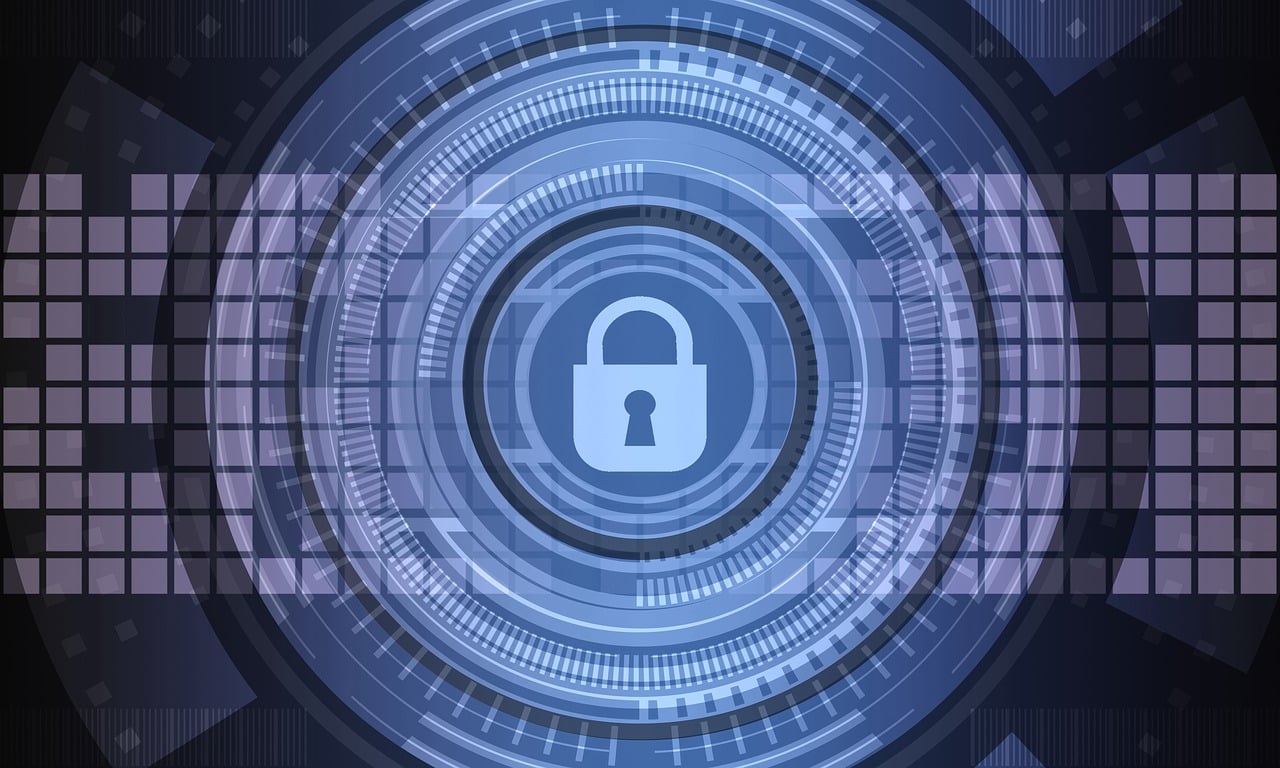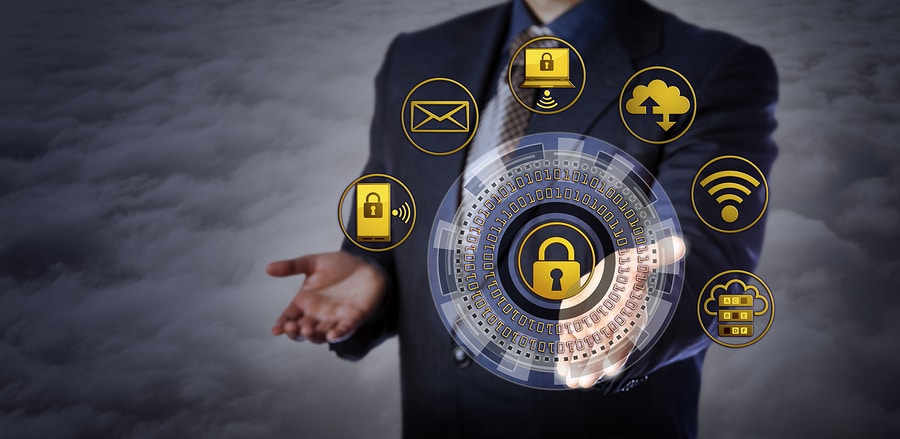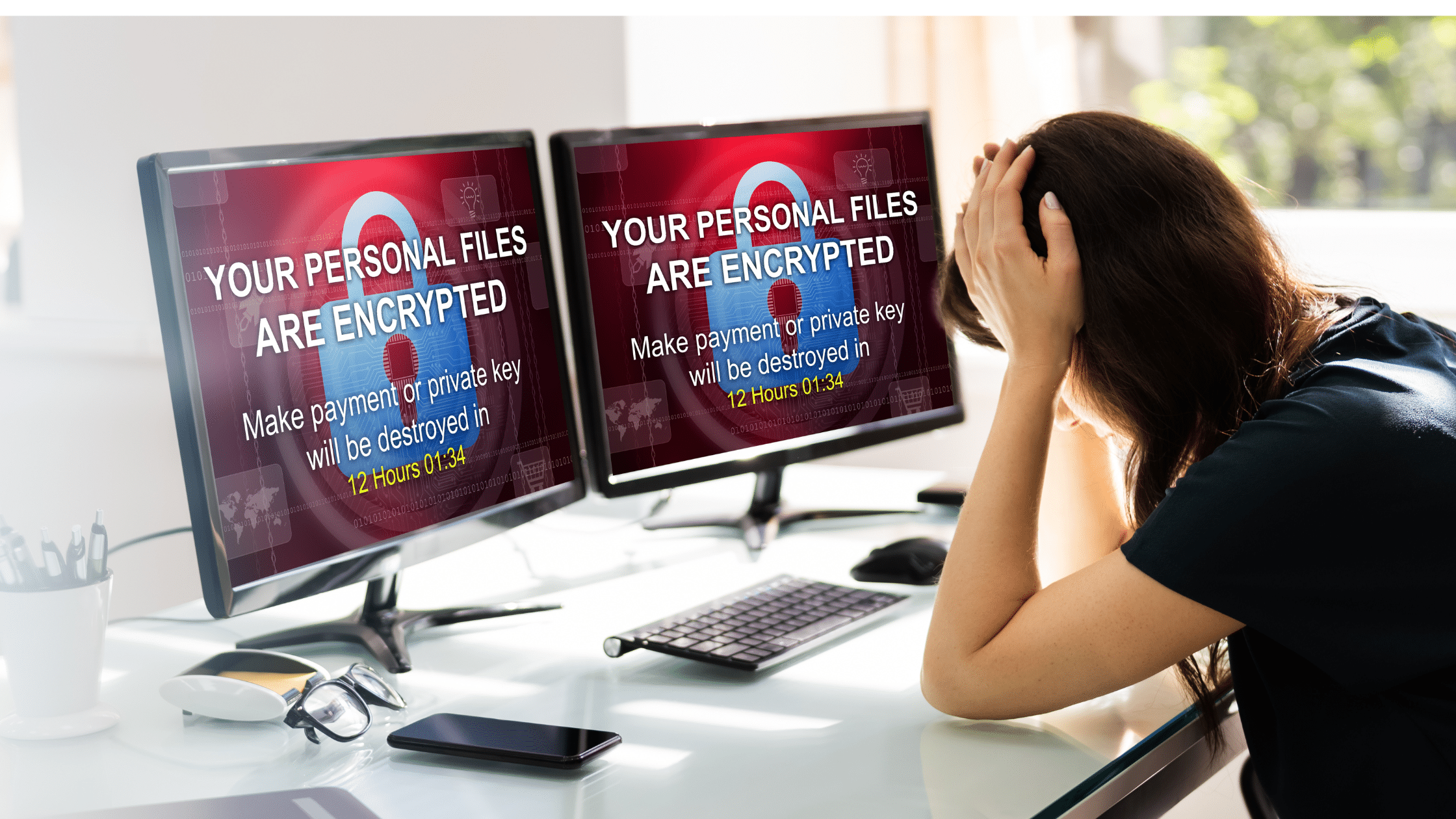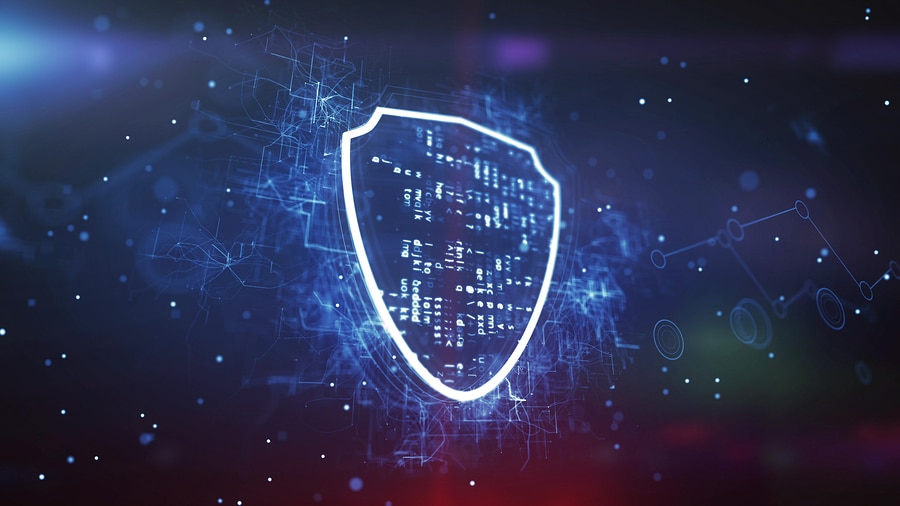
It takes more than strong passwords to prevent credential theft. Security hygiene best practices are designed to proteect your data.

It takes more than strong passwords to prevent credential theft. Security hygiene best practices are designed to proteect your data.

It takes training, vigilance, top-down buy-in, and proactivity to create and maintain a cybersecure team – part of a comprehensive IT security strategy

Is your email secure? All it took patience, sophistication, and a password from the dark web for hackers to create a breach that cost more than $200,000.

If you read the trade mags, you would think the sky is falling and email encryption should be removed. Not so fast – it’s still a secure way to protect your biz.

Meeting your business objectives is virtually impossible without a well-developed information security program. Managed security providers can help. With businesses of every size and industry facing threats on a daily basis, comprehensive data security is now a primary need. However, many businesses don’t dedicate the personnel, time, or resources to maintain something that is always evolving. How can you address the constant barrage of hackers, malware, and phishing attacks and still stay in business?
The Importance of Managed Security
Cyberthreats are on the rise, and the technology used to launch these virtual offensives only gets more sophisticated with each attack. If you happen to have an experienced IT specialist at your disposable, you are one of the lucky few. Many small businesses lack the resources necessary to employ an IT professional, and even those businesses with full IT departments struggle to keep pace with cyberthreats. A Managed Security Service Provider, or MSSP, can offer premium IT services that are provided by highly-trained cybersecurity experts. Every aspect of data security for your business is covered, while an MSSP tackles cyberthreats so you can get back to running your business.
IT Departments Are Overwhelmed
It’s tough to admit when your professionals are stretched too thin, but outsourcing to a knowledgeable MSSP can offer relief to your entire organization. There’s no doubt that your IT personnel feel stress when a fraudulent email is opened and results in a system-wide crash, but all employees experience frustration when they can’t do their jobs. We work in a digital age that demands a reliable cybersecurity infrastructure. Even the best IT departments can lack the training and resources required to combat threats, and they are expected to simultaneously manage the daily upkeep of your business. IT security is more important than ever, making it crucial to control the many variables that exist.
An IT Strategy is a Necessity
Do you know when your basic programs need an upgrade? What are the proper security precautions for your eCommerce store? Are you in compliance with the latest regulations? These questions, and more, require up-to-date answers, and many businesses struggle to establish an IT strategy that covers all angles. An IT strategy should also create defense mechanisms within your systems that will alert you to data breaches. Faster responses save time and money, and although every breach can’t be prevented, hackers can be promptly stopped in their tracks. Not every strategy is going to look the same, and an MSP can offer specialized solutions that fit your business objectives.
You Can’t Afford Regular Attacks
When considering an IT budget, many businesses don’t recognize the hidden costs that are inevitable. Breaches cost money, and frequent attacks will exhaust whatever budget resources you have established. Cutting costs where IT personnel and strategy is concerned will hurt you in the long run, putting your entire business at risk. You’ll spend more time on pursuing hackers and repairing the damage they have caused than you will on improving cybersecurity. An MSSP can greatly reduce costs by preventing breaches of sensitive information, and an agreement will usually offer a predictable monthly fee.
What Can thinkCSC Do for Your Business?
At thinkCSC, we take security seriously, and we want to give you the most control over your business with the necessary cybersecurity measures. Our determination to offer ourselves as an experienced MSSP has promoted the development of innovative levels of security monitoring for our clients. Massive cyberthreats are a normal part of doing business, but they are risks that can, and should, be addressed and abated. thinkCSC provides excellent levels of monitoring and detection designed to protect your data and keep your organization running smoothly.
At thinkCSC, cybersecurity is simply what we do. We can partner with you to develop a unique solution designed to fit your business model. Take the first step towards advanced cybersecurity practices and contact us today to learn more about our enhanced Managed Security options.

 We keep repeating this, because it bears repeating: Cybersecurity is one of the most pressing issues facing businesses in today’s technological world. Business size, resources, location, and other characteristics are almost irrelevant. From small, individualized breaches to worldwide ransomware attacks, the scope of cybersecurity compromises has risen dramatically throughout the last decade.
We keep repeating this, because it bears repeating: Cybersecurity is one of the most pressing issues facing businesses in today’s technological world. Business size, resources, location, and other characteristics are almost irrelevant. From small, individualized breaches to worldwide ransomware attacks, the scope of cybersecurity compromises has risen dramatically throughout the last decade.
This trend has led to the need for organizations of every size to establish strategies to enhance cybersecurity and combat attacks. One such approach is known as vulnerability management (VM), which focuses on identifying threats and reducing exposure rather than merely reacting to incidents. In broad business terms, this approach differs from the old quality control systems (detecting problems as they happened or early in their appearance, thereby containing potential crises) and is more like the newer quality assurance approach (putting measures in place to assure the prevention of problems occurring at all). Quality assurance approaches include expeditious handling of issues that occur, but they focus on identifying potential systemic weaknesses and strengthening them in order to prevent issues from the start.
How is this done? What does this mean in practical terms? How can even small and medium-sized businesses (SMBs) employ a sufficiently robust VM plan?
The following are a few answers to these key questions:
Treat the Issue as More than Just a Requirement
Too many companies approach cybersecurity in general, and vulnerability management in particular, as an item on a checklist – a chore that must be done. These companies perform an annual scan and often use outdated or mismatched software systems. Treating cybersecurity simply as a requirement leads to inadequate protection and a never-ending cycle of escalating issues over which they never gain full control. Solving a serious problem requires seeing it as a serious problem and then treating it as such.
Conduct Regular Vulnerability Scans
Solid VM programs involve much more than just threat-detection scans. They do employ regular scans (at least quarterly) using up-to-date systems, but they also include additional elements, such as root-cause analysis, tracking, remediation, and detailed reporting. Without such comprehensive essentials, businesses leave themselves open to risks that can be eliminated systematically.
Consider Both Authenticated and Unauthenticated Scanning
Unauthenticated scanning is a simple scanning process through which devices are scanned remotely to determine exposed vulnerabilities. Authenticated scanning goes one step further and logs into the system with a valid user account. Using authenticated scanning can identify system configuration issues, as well as embedded vulnerabilities that simple scanning cannot catch.
Use the Common Vulnerability Scoring System (CVSS)
The CVSS uses a calculation metric to assign severity scores to vulnerabilities. The three core areas analyzed are: base metrics (qualities that are intrinsic to a vulnerability), temporal metrics (vulnerabilities that evolve over time), and environmental metrics (vulnerabilities that require specific implementation or a particular environment). This allows organizations to prioritize their responses in an intentional, meaningful, and productive manner and avoid the tendency to spend disproportionate time and resources on minor threats.
Fix the Issues That Cause Vulnerability
Scans merely identify threats. Most companies do nothing more than remove the threats discovered by their scanning measures. What they fail to do is fix the core issue that allowed the threat into their systems in the first place. Thus, the same threats often reappear, are discovered by future scans, are removed once again, and the cycle continues. Eliminating the entry portal exploited continually by the threat closes the existing security gap and stops this cycle of entrance and removal, which altogether eliminates the risk posed by the threat.
If Necessary, Outsource Vulnerability Management
Vulnerability management can be overwhelming, especially for SMBs with limited technical expertise and limited budgets. Just as outsourcing HR, legal, or security services can be beneficial, partnering with an established, knowledgeable Managed Security Services company can be a perfect, cost-effective solution to such a daunting task.

Employee cybersecurity accountability cannot be ignored, since even one successful breach can cripple your business and put your security at risk.

Ransomware attacks continue to outpace cybersecurity efforts, threatening your organization’s most essential files. Thousands of employees, users, and clients click links and download files in emails, and no matter how cautious you urge them to be, a single toxic file is capable of bringing down your entire network. This threat is not going away, but your business can still employ its best defense and avoid a worst-case scenario.
Businesses today rely heavily on data, but many of these businesses continue to operate without crucial protection. According to Datto’s State of the Channel Ransomware Report 2016, ransomware attacks on small businesses are becoming more frequent; 91 percent of the managed service providers they surveyed reported clients victimized by ransomware. Furthermore, findings indicated that the most common impact of ransomware was not simply loss of data, but business-threatening downtime that crippled productivity.
How do you convey to every single employee what ransomware looks like? How do you teach every client to not fall prey to a scam? You can start with educating and training employees about good security practices, urging them to download the thinkCSC email security guide. But training is not enough to protect your data from ransomware.
So what can your business do to protect itself? Backup and Disaster Recovery (BDR) is the best – and possibly only – protection against ransomware. If budget constraints are your main concern, then realize that the cost of implementing BDR is miniscule compared to the financial impact of an attack. Datto’s Ransomware Report estimates down-time costs at $8,500 per hour, which adds up to $75 billion per year. BDR allows you to:
BDR makes it easy to maintain several copies of your data; as well, you can backup and store your data somewhere physically separate from your network. With the assistance of a managed service provider, your business can take extra steps for protection:
Good cyber security practices involve steps that do more than try to avoid ransomware. Recognize that no matter how many layers of security you implement, there is virtually no fail-safe measure to safeguard against ransomware attacks. Ransomware is insidious in its ability to continue evolving to better dupe unsuspecting recipients into clicking a link or downloading a file. Rather than gamble with the security of your data in the hope that it will never happen to you, be prepared with offsite backups that house and maintain all your sensitive data. BDR is a peace-of-mind measure that could save your business. Contact thinkCSC to learn more.

IT security spending is on the rise. For many years, organizations have argued that security budgets are already stretched to the max and that there is no more room for increased security. With costly security breaches impacting governments, social media platforms, the IRS, and more small and mid-size businesses than we can count, the investment in security suddenly seems like the least expensive option.
Whether you increase your spending on IT security or simply find a better way to spend your budget, one thing is certain: what you spend on IT security is a predictable, planned cost that doesn’t send your shareholders into a panic, doesn’t make your customers question their loyalty, and doesn’t put you out of business. A security breach, on the other hand, can result in fines, lawsuits, costly recovery, and a loss of customers.
If your organization has decided to increase IT security, how do you make sure you’re getting the most out of your investment? We recommend focusing on these areas:
Email is still one of the most popular ways for hackers to penetrate your security, because all it takes is one email on one employee’s system compelling them to open an attachment or click on a link to create a breach that will affect your entire IT infrastructure. People will always be the weakest link in security. Sender policy framework protocols, hosted email exchange services, and ongoing employee training are all essential. Download our email security guide to help your employees think before they click.
Every device that touches your network needs to be secure, whether it’s an employee-owned cell phone, vendor equipment, or a field tech’s laptop. It is crucial to identify every remote device that might potentially connect to your network; have a way to both detect that connection, protect that connection, and eliminate the connection if needed. Endpoint security is the solution.
Enterprise threat detection uses predictive analytics on a powerful and global scale to recognize and block threats before they happen. Rather than relying on end users to determine the safety of a file or a site, it uses intelligence to stop threats by preventing malware-infected devices from connecting and by blocking phishing sites.
Unless you want to be permanently locked out of your data or forced to pay a ransom to restore access, having an offsite backup and recovery service is essential. The email security, endpoint security, and threat detection efforts you implement will prevent many of the ransomware attempts from getting through, but all it takes is one employee clicking on one link in one email that sneaks through to create havoc.
Effective network security that keeps your IT environment efficient and stable is about applying layers. The initial layer is a solid backup and recovery solution, protected by an antivirus solution, and then guarded by a firewall. Enterprise threat detection, email security, and endpoint security are the shields that head off attacks on your business before they happen. It’s more than peace of mind: It’s good business sense.
At thinkCSC, we believe that in order to achieve maximum success, regardless of the size or type of organization, you must make IT an integral part of your overall business strategy and partner with IT professionals who not only understand how to leverage technology to your advantage but who are also committed to understanding your business goals and aligning your IT strategy to them. We pride ourselves on having the best business-savvy technical experts in the industry. If you would like to learn how to create an IT security strategy aligned with your organizational goals, contact thinkCSC for more information.

 An organization is only as secure as its weakest access point, and certain endpoints – smartphones, laptops, and other portable devices that are often connected to public WiFi hotspots or are apt to be lost – are a weak spot for most organizations.
An organization is only as secure as its weakest access point, and certain endpoints – smartphones, laptops, and other portable devices that are often connected to public WiFi hotspots or are apt to be lost – are a weak spot for most organizations.
Endpoints are an easy target. Endpoint security is designed to thwart the most common risks these devices present, by detecting and blocking malware, as well as reducing vulnerabilities while ensuring a sensible balance between protection and user access.
Does Your Organization Need Endpoint Security?
Does your company use mobile devices? Do your employees have the ability to take these devices offsite and off-network? Would a data breach cost you customers, downtime, or lost business? If you answer yes to any of these questions, then endpoint security is something your organization should consider.
Endpoint Security and Phishing Scams
Email security is a challenge for every organization. Your employees, whose split-second decision to click on a link or open a file puts you at risk – are part of the solution. But can endpoint security help you prevent phishing attacks? As part of an overall strategy to implement multiple layers of security designed to block as much malware as possible, endpoint security can work at the device level by:
Threats from phishing emails and malware, such as ransomware, worms, and bots, are a constant threat. Proactive measures must be taken to prevent existing and emerging threats, not just on your network and servers but at every point of access as well as through employee training and consistent reinforcement.
As cybersecurity remains a top concern for business leaders in every industry, taking the necessary steps to protect your organization becomes a high priority. Minimizing your risk is easier when you partner with a trusted managed IT service provider who partners with your organization, understands your needs, and provides customized solutions to ensure that you have the protection you need. thinkCSC is committed to helping you find the most economical solutions to meet their needs. For more information, contact us today.
Recent Comments